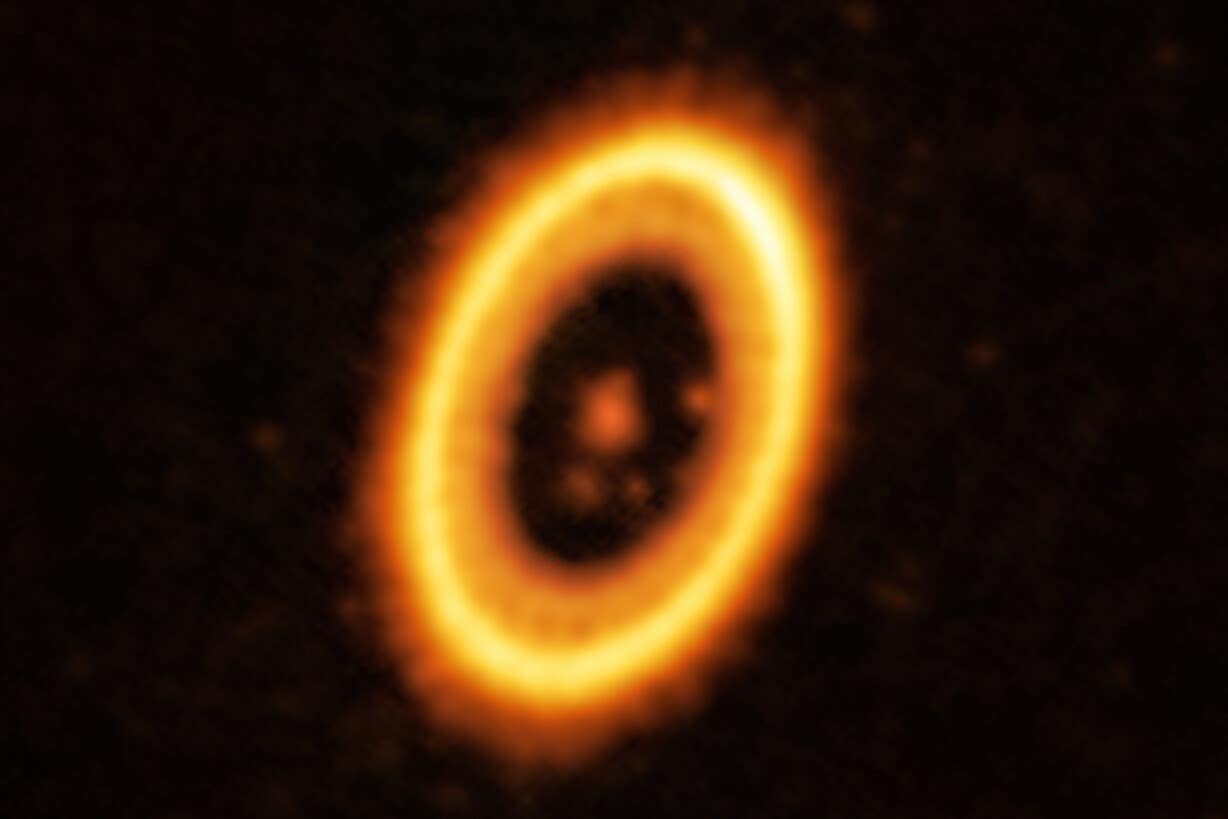Astronomers discover exoplanet that may have a sibling sharing the same orbit
The researchers detected a cloud of debris which could be the building blocks of a new planet or the remnants of one already formed.

Your support helps us to tell the story
From reproductive rights to climate change to Big Tech, The Independent is on the ground when the story is developing. Whether it's investigating the financials of Elon Musk's pro-Trump PAC or producing our latest documentary, 'The A Word', which shines a light on the American women fighting for reproductive rights, we know how important it is to parse out the facts from the messaging.
At such a critical moment in US history, we need reporters on the ground. Your donation allows us to keep sending journalists to speak to both sides of the story.
The Independent is trusted by Americans across the entire political spectrum. And unlike many other quality news outlets, we choose not to lock Americans out of our reporting and analysis with paywalls. We believe quality journalism should be available to everyone, paid for by those who can afford it.
Your support makes all the difference.Astronomers have found the possible sibling of a planet sharing the same orbit of a distant star.
The researchers detected a cloud of debris that might be sharing this planet’s orbit, which could be the building blocks of a new planet or the remnants of one already formed.
The discovery would be the strongest evidence yet that two exoplanets – planets outside our solar system – can share one orbit, if it is confirmed.
We can imagine that a planet can share its orbit with thousands of asteroids as in the case of Jupiter, but it is mind blowing to me that planets could share the same orbit
Olga Balsalobre-Ruza, who led the paper published in Astronomy & Astrophysics, said: “Two decades ago it was predicted in theory that pairs of planets of similar mass may share the same orbit around their star, the so-called Trojan or co-orbital planets.
“For the first time, we have found evidence in favour of that idea.”
The student at the Centre for Astrobiology in Madrid, Spain, added: “Who could imagine two worlds that share the duration of the year and the habitability conditions? Our work is the first evidence that this kind of world could exist.
“We can imagine that a planet can share its orbit with thousands of asteroids as in the case of Jupiter, but it is mind blowing to me that planets could share the same orbit.”
Trojans – rocky bodies in the same orbit as a planet – are common in our own Solar System, with the most famous example being the Trojan asteroids of Jupiter.
These are more than 12,000 rocky bodies that are in the same orbit around the sun as the gas giant.
While astronomers have predicted that Trojans could also exist around a star other than our sun, there has been little evidence to support this.
“Exotrojans (Trojan planets outside the solar system) have so far been like unicorns – they are allowed to exist by theory but no-one has ever detected them,” says co-author Jorge Lillo-Box, a senior researcher at the Centre for Astrobiology.
Using the Atacama Large Millimeter/submillimeter Array (ALMA), in which the European Southern Observatory (ESO) is a partner, scientists say they have found the strongest observational evidence yet that Trojan planets could exist — in the PDS 70 system.
This young star is host to two giant, Jupiter-like planets, PDS 70b and PDS 70c.
By analysing archival ALMA observations, the scientists spotted a cloud of debris at the location in PDS 70b’s orbit where Trojans are expected to exist.
According to the researchers, this cloud of debris could point to an existing Trojan world in the system, or a planet in the process of forming.
To fully confirm their detection, the team will need to wait until after 2026, when they will aim to use ALMA to see if both PDS 70b and its sibling cloud of debris move significantly along their orbit together around the star.
“This would be a breakthrough in the exoplanetary field,” Olga Balsalobre-Ruza concluded.